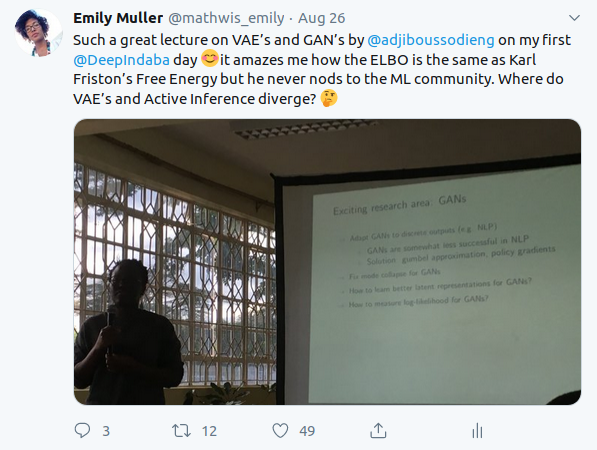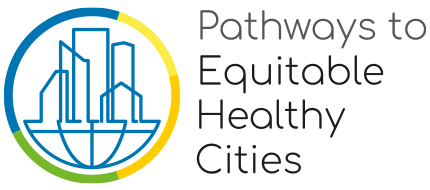At the end of August this year I visited Kenyatta University in Nairobi. Partly because I’ve always wanted to travel to Kenya, partly because I was co-organising a workshop there and most of all, because, for anyone interested in Data Science, Machine Learning (ML), Artificial Intelligence (AI) & Africa, The Deep Learning Indaba is the place to be.
An indaba is a Zulu word for a gathering or meeting. The Deep Learning Indaba is the annual gathering for the African AI community and this year 700 participants gathered in Kenya’s capital, embodying this years theme: Sauti Yetu (Our Voice).
Sauti Yetu stands as a proclamation of self-ownership of the African AI community, who have, until now, been overlooked as global participants. Technologists, researchers, innovators and learners gathered on the equatorial red earth to discuss, learn and teach AI. Topics covered everything from building your own Tensorflow-like software to the use of machine learning in healthcare, the societal disruption of technology and measuring probability distribution divergences in deep generative models.
This is the pan-african AI community and as such, it is dedicated to creating scientific solutions which are afrocentric. That does not mean simply looking out to what has been done in Europe or in the US and reinventing existing technologies, but grounding science in the many diverse problems faced by Africans everyday.
Now in its third year of maturity, the Deep Learning Indaba has revolutionised the African AI community. Capacity building is at its core, with the first day dedicated to Machine Learning fundamentals and tutorial sessions provided to all attendees throughout the week [available online]. IndabaX satellite events began in 2018 and this year there were 27 events across the continent strengthening African machine learning.
Such a feat is only possible to accomplish by an organisation built from and for the community. There are no stars to this show, just a group of dedicated organisers and passionate attendees; everyone here is learning. Consequently, everyone is also a teacher and therefore one always has something to offer.
As a result, the networks within this community are stronger than ever with partnerships now established between Data Science Africa, the African Masters in Machine Intelligence at AIMS, Data Science Nigeria, Nairobi Women in Data Science and Machine Learning, AI Kenya, Nairobi AI, Black-in-AI, and the North African Summer School on Machine Learning.
There was a vast range of specialised content presented at this year’s Indaba, so it would be impossible for me to summarise what I saw and didn’t see. Instead, here is just a flavour of the research relating to the Pathways to Healthy Equitable Cities study that was showcased at this year’s Indaba.
Imagery
From the poster sessions, Reasetje Sefala and Vongani Maluleke presented their work on the use of satellite imagery for measuring inequalities. Reasetje’s work builds a semantic segmentation model to learn to detect neighbourhoods in satellite images. Neighbourhoods are then classified as township, suburb, informal settlement or village, for example, and she continues to analyse how these neighbourhoods change over time, addressing the evolution of spatial apartheid in South Africa. Also in South Africa, Vongani’s work trains a segmentation algorithm on manually labelled satellite images to detect individual dwelling types, such as brick, traditional and informal house, and land use type, such as urban, rural and farm. These detections are then used to estimate poverty (see posters here and here).
Atlas AI was announced earlier this year, an enterprise established by the Rockerfeller foundation and a team at Stanford University to provide low-cost data products to support global development. We were presented with Tile2Vec, a model inspired by vector representation word model Word2Vec. Tile2Vec is an unsupervised learning algorithm for classification of crop types from satellite imagery. The method outperforms supervised models when labelled data has less than 50K pairs. Not only do the authors address the key challenge of not enough labels, but the satellite data used is freely available.
Traffic
Check out this 5 minute video on attendees presenting their work relating to the use of imagery for traffic analysis in London and Nairobi, respectively.
ML4Health parallel session
This session is not directly related to the Pathways study but, in the remit of clinical health, it addresses the challenges we all face of low data resources on the continent and was also one of my favourite sessions, along with Generative Models. If you are curious, you can find all the presentations here.

Deep Learning for Diabetic Retinal Disease Diagnosis in Zambia
This work presented the transferability of deep learning methods for diabetic retinal diagnosis from the source population, in Singapore, to the target population, in Zambia. Ensemble models were trained on 76K retinal images from Singapore and tested on 4.5K retinal images from Zambia achieving greater than 90% accuracy.
Deep Learning for Image Quality Transfer.
Epilepsy has become one of the most prevalent neurological diseases for Nigerian children. MRI quality and subtle lesions hinder epilepsy diagnosis. The speaker presented Deep Learning methods for Image Quality Transfer to enhance the low quality MRI images and assist with subtle lesion detection.
Towards Automating Healthcare Question Answering in a Noisy Multilingual Low-Resource Setting
MomConnect is a South African National Department of Health initiative to improve the health of pregnant women, newborns and infants by providing information and support via SMS and WhatsApp in the 11 official languages of South Africa. The data consists of 230K multilingual question answer pairs and uses a Long Short Term Memory network to predict answer selection. The results have greater than 80% recall for low resource languages and subsequently, the engineering lab are creating a recommender system from the model.
What I’ve shown you is really just a snapshot of a whirlwind event, bringing together scientists from a range of AI disciplines. Read more about the Indabas growing tech industry from Dave Gershgorn and a more personal open letter from Jade Abbott. We co-organised an Ethics and Fairness Symposium in partnership with UNESCO at this years Deep Learning Indaba, and if you want to hear more about my opinions from that experience, head over to my personal blog.
The Deep Learning Indaba 2019 has allowed me to stand with confidence in my own voice and to use the words of Jade Abbott, Indaba community member, “it’s hard to phrase what empowerment feels like. Personally, I went from feeling severely inadequate two years ago, to feeling empowered last year, to feeling empowered to the point where I can empower others”. Looking forward to what the future holds in this space.
